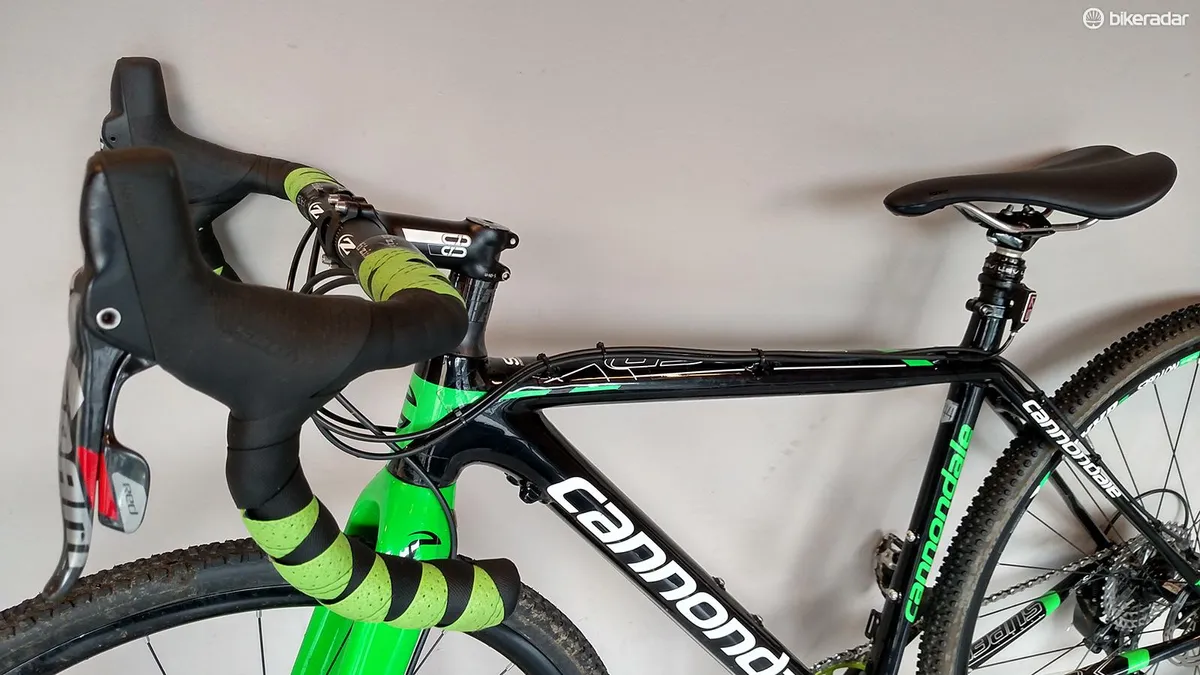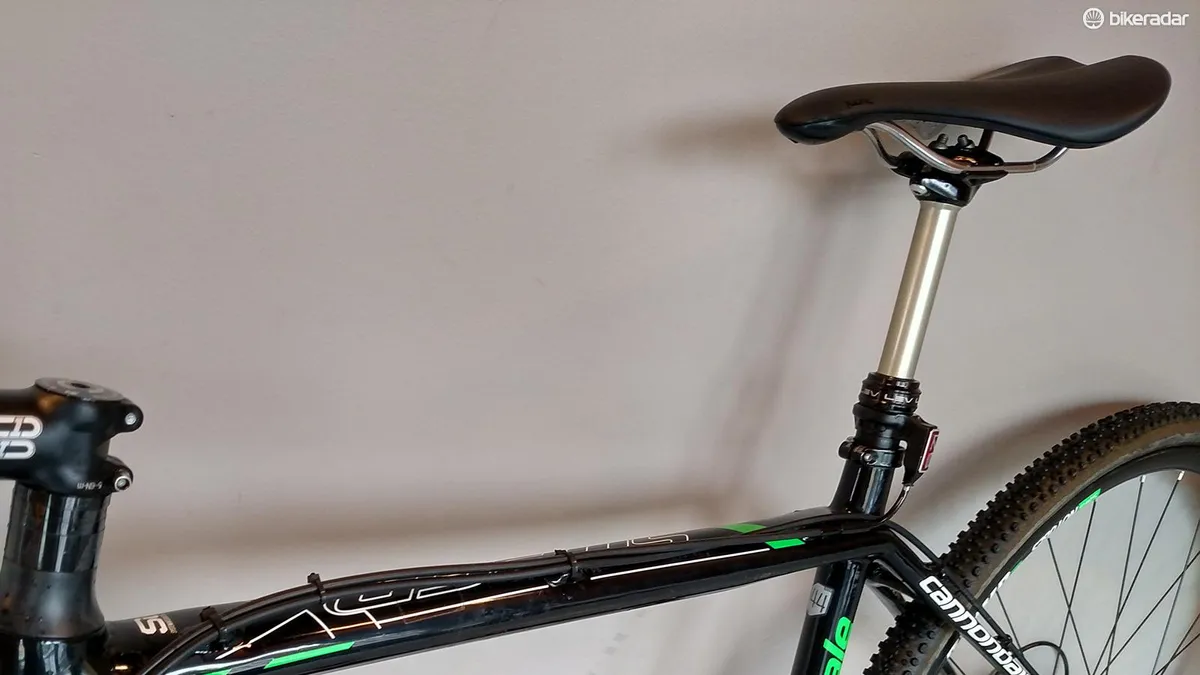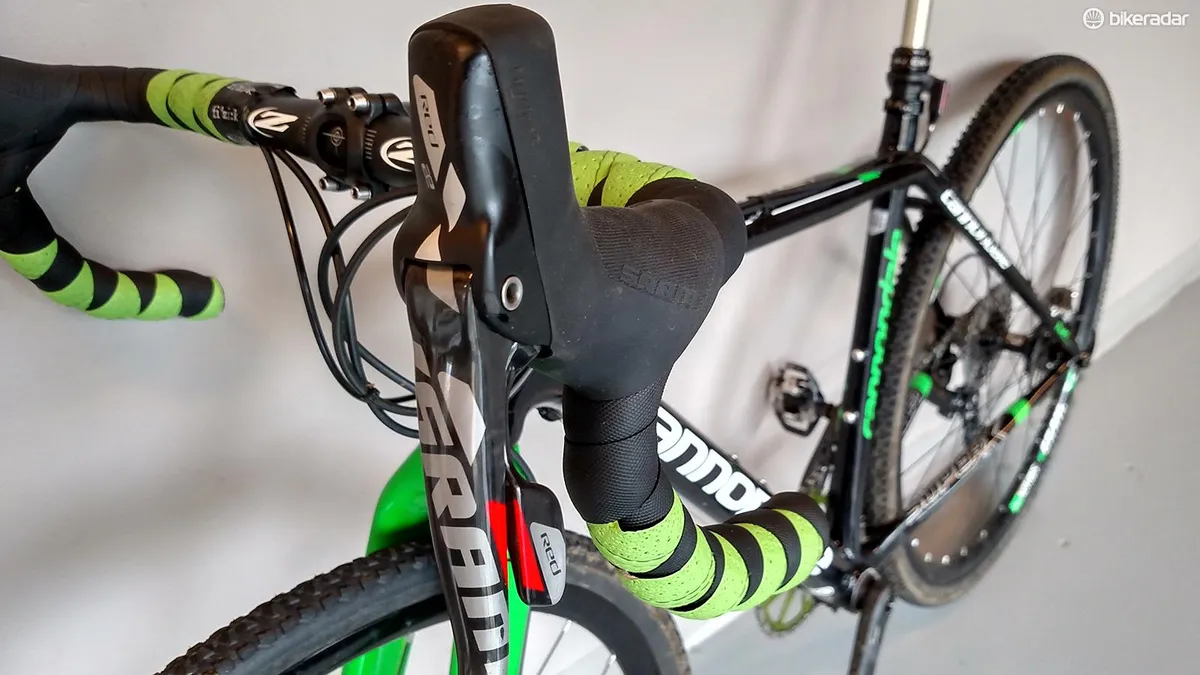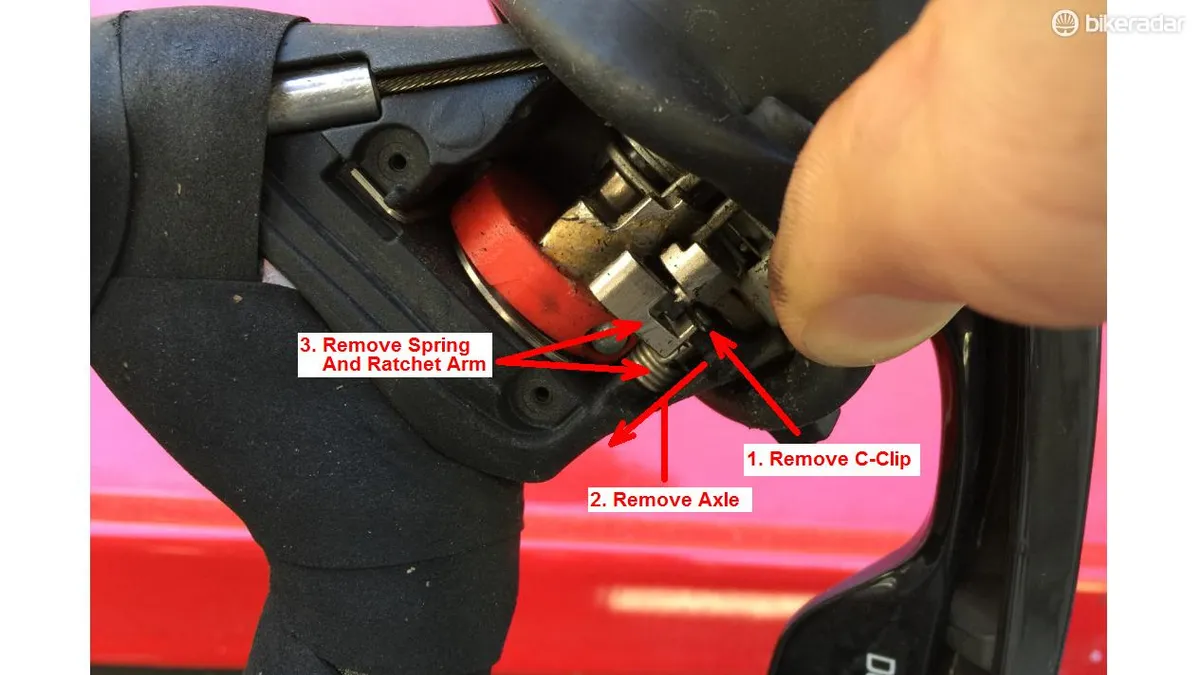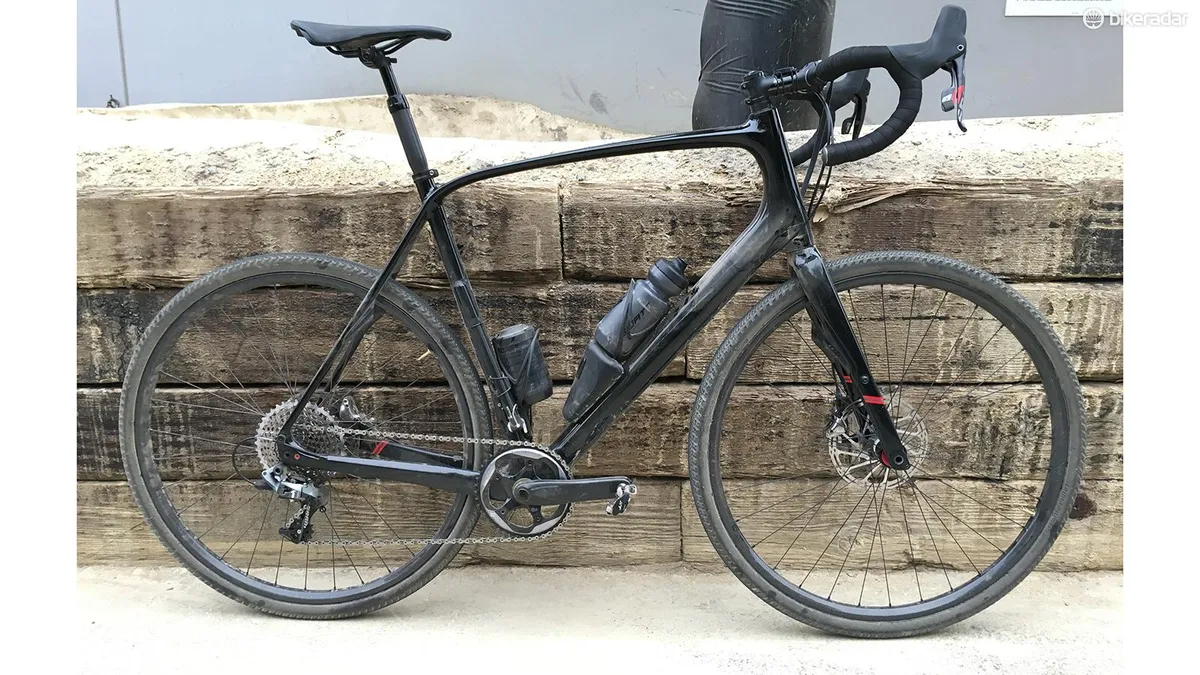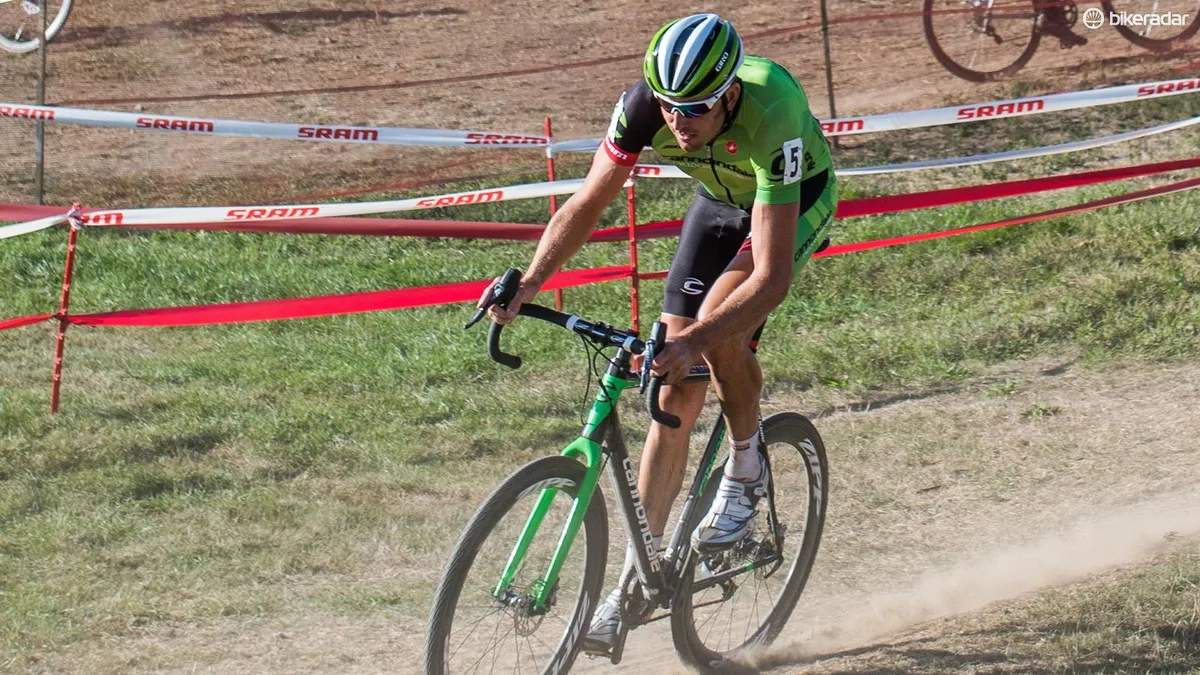It’s October, and despite it being the heat of summer, it’s still perfectly acceptable to ride your knobby-tyred road bike in circles for an hour. Yet, it’s properly cyclocross season for those in the Northern Hemisphere, and that typically means a new age of tech. And one of the latest technological innovations showing up between the barriers is the dropper seatpost.
The dropper seatpost is practically mandatory on modern mountain bikes (at least I can’t stand to ride without one) and they are popping up on some cleverly hacked-together setups for road, gravel and cyclocross with increasing frequency. So this week we venture off the trail and onto the cyclocross course to see if there’s any benefit to running a dropper for ’cross racing.
Barriers to use
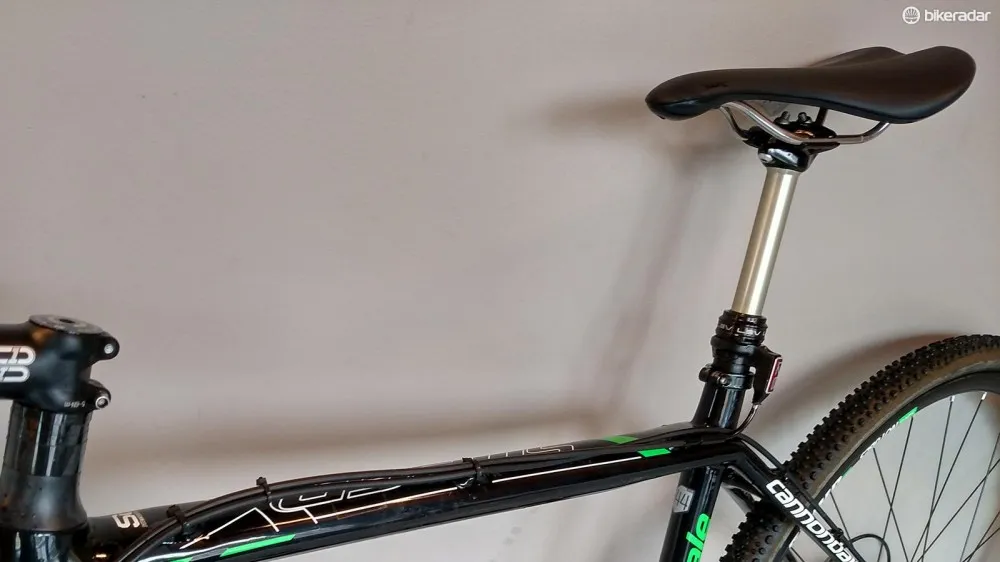
Not every rider has enough exposed seatpost to run a dropper on a 'cross bike
First off, running a dropper seatpost on a cyclocross bike comes with some significant hurdles.
For one, today’s ’cross frames are not designed with droppers. The majority of cyclocross bikes use 27.2mm seatposts, whereas most droppers are only available in 30.9 and 31.6mm versions.
Most dropper seatposts offer more drop than can be used on cyclocross bikes. Mountain bikes prioritize standover clearance, while ’cross bikes prioritize the amount of area in the main triangle for shouldering, this can limit the amount of exposed seatpost, making it difficult or impossible to run a dropper.
There are some 27.2mm options on the market from KS, Thomson and Specialized that could be suitable. Specialized, for one, sees a future for dropper seatposts on drop bar bikes. The Specialized Command Post XCP is an ideal candidate for the job. While designed for cross-country racing, it is also suitable for use on cyclocross bikes. It comes in a 27.2mm diameter in versions with 35 and 50mm of drop, so it should fit a wide range of frames.

The Specialized Command Post XCP is a possible option for riders wanting to run a dropper on their drop bar bikes
Hacking the system together

SRAM double levers can be easily hacked to function as a dropper lever
Even if you can run a dropper on your ’cross rig, lever placement can still be problematic. In the fast-pace world of ’cross racing, there’s very little time to adjust one’s position, or take a hand off the hoods to reach for an additional lever. This is why some riders running SRAM doubles switched to 1x drivetrains and gutted the left shifter to act as the actuator for their dropper post.
US amateur racer Andrew Lints has gained a bit of Internet stardom for his crafty dropper set-up. Lints, a college student studying computer engineering, has a strong mountain bike background and thought to himself “Why not run a dropper on my ’cross bike?”
Lints rides a Cannondale SuperX with a 27.2mm KS Lev seatpost. He sized down by one frame size in order to have enough exposed seatpost to run a 100mm dropper.
To actuate the seatpost, Lints removed the ratchet arm that controls the indexing of his SRAM Red front shifter. (This hack is completely reversible if a rider decides they would rather run a double than a dropper.)
A dropper post for cyclocross
“In all of the ‘cross races I've done so far, I would say the dropper was useful for at least three or four sections per lap where it felt faster/safer to have it lowered (either an inch or fully dropped) compared to having it raised,” Lints said.
Lints is not alone in pursuing this hack. Ryan McDonald, who works in Specialized's research and design shop, has been running a Command Post XCP on his Diverge all-road bike for several years. Like, Lints, McDonald uses a gutted SRAM lever to actuate the seatpost.
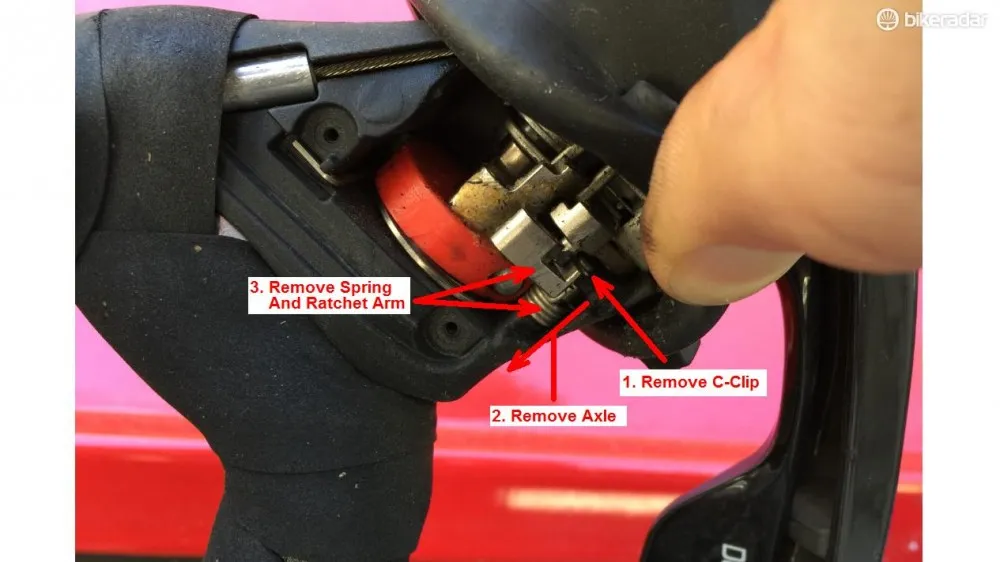
McDonald and Lints removed the ratchet mechanism that controls the indexing of the front shifter in order to turn it into a dropper lever
Tech to come
The best purpose-built dropper seatpost solution for drop bar bikes will likely be electronically controlled. SRAM’s recently-released Red eTap and Shimano’s Di2 systems are candidates for incorporation. A future Shimano dropper seatpost could be operated with a Sprint shifter tucked beneath the tape.
SRAM’s eTap system is particularly ideal, because it is wireless. It’s entirely possible that a future electronic version of the Reverb could be controlled with one of the company’s Blip shifters, which are wired to the shift levers and can be positioned anywhere on the handlebar.
A shorter travel version of Magura’s new Vyron eLECT dropper could potentially be a candidate as well.
What do the pros think?
These clever hacks and speculation about what the future may hold are entertaining, but here’s the real question: would the addition of a dropper seatpost provide a competitive advantage to a racer whose livelihood depends on their ability to finish first?
I asked three professional mountain bikers, who also hold their own on the cyclocross circuit, along with one team director, what they think of dropper seatposts for cyclocross.
Georgia Gould, Luna Pro Team
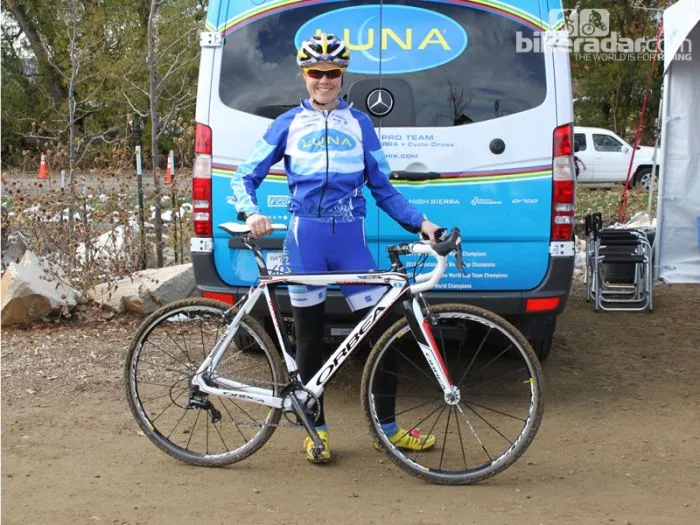
Gould isn't convinced the cyclocross courses warrant a dropper post
“I don't really think I would use a dropper on a ’cross bike much. Maybe if you were just riding a lot of trails, but I don't really see it being a game-changer in races. I love having a dropper on my mountain bike though, and not just on steep trails; it really helps with cornering. It might be handy in races where you are riding over or down obstacles, just to give you more margin for error without the seat hitting you and knocking you off balance. But in a ’cross race, so much of your time is spent pedaling that I don't think it would get used enough to justify it. But who knows, maybe it's the next big thing!”
Justin Lindine, Apex/NBX/Trek

Lindine races cross-country and cyclocross and doesn't think there's much place for dropper seatposts in 'cross racing
“I can't say that I really see the need for it. I mean, obviously, to each his own on equipment choices, but even in mountain biking I haven't personally seen the need for one in XC type situations. I think the terrain we cover in ’cross doesn't really warrant that way back over the saddle position 99 percent of the time. That coupled with the fact that you're dealing with a tyre contact patch fractions smaller than on a mountain bike and you can't really get away with the aggressive, leaned-over, cornering style that a dropper is designed to allow. That all being said, maybe for someone who is really tall it might make more of a difference, but I still would have a hard time seeing it as worthwhile, since we're talking about maybe one section of any given course where its benefit is going to come into play. It's just one more thing to have to think about in a race where you don't have a lot of time or energy left for additional thoughts.”
Ryan Trebon, Cannondale-Cyclocrossworld.com
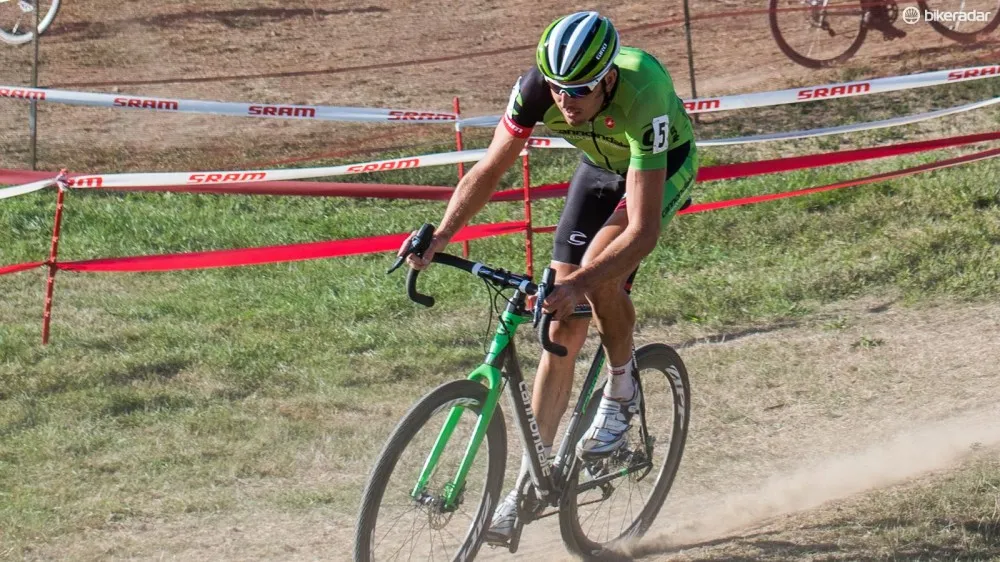
Trebon stands 1.96m / 6'5" tall and has a saddle height of 930mm. A dropper seatpost would certainly help him lower his center of gravity!
“I think a dropper post is a fantastic idea. I discussed it with the guys at Cannondale in July — the exact same idea as [Andrew Lints]. I think it would be extremely beneficial in bumpy, off-camber courses — even tight turns, as it allows you to lower your center of gravity but also to center it more over the bike without the seat being in the way. Being able to activate it from the hoods is key, as you'd want to drop it before a section then be able to extend it back to full height as you’re sprinting out of a turn. I think 5in of drop would be too much but a 2-3in one would be ideal for cyclocross and feasible on most ’cross bike fits.”
Stu Thorne, Cannondale-Cyclocrossworld.com team director

Thorne thinks droppers could be useful on more technical courses
“I think there could be a place for dropper posts in cyclocross. They could be an advantage in some situations. I think guys who come from more of the mountain bike side of things would be likely to adopt them. They could work pretty well on some of the switchback downhills we've seen at some courses. Some of the drop-ins that I've seen at races might be easier to do with a dropper post. The weight penalty isn't a big deal as we see lighter bikes hitting the market. They only add a few grams. With the advent of single rings, it makes a perfect match for a place to put the dropper lever — just sneak it into the unused shifter. Ryan is a perfect example of a rider who would benefit from having a dropper post due to his lanky build. It would allow him to attack certain sections of a course when he drops his saddle from 93cm to something more reasonable!”
Droppers crossing over?
There’s seems to be a great deal of disagreement about the utility of droppers for cyclocross racing. Like any new technology, there are some early adopters as well as folks who just don’t see the need.
If droppers can give some riders a competitive advantage, then it is very likely we’ll start to see more droppers pop up on cyclocross courses. It may be too early to say anything definitive, but dropper seatposts could become one more tool in a racer’s arsenal.
“Just as there is an art to shifting to be in the right gear for a climb or a sprint, there are times when using the dropper will make you faster, but you also need to know when to leave it alone, put your head down, and pedal,” Lints noted.
